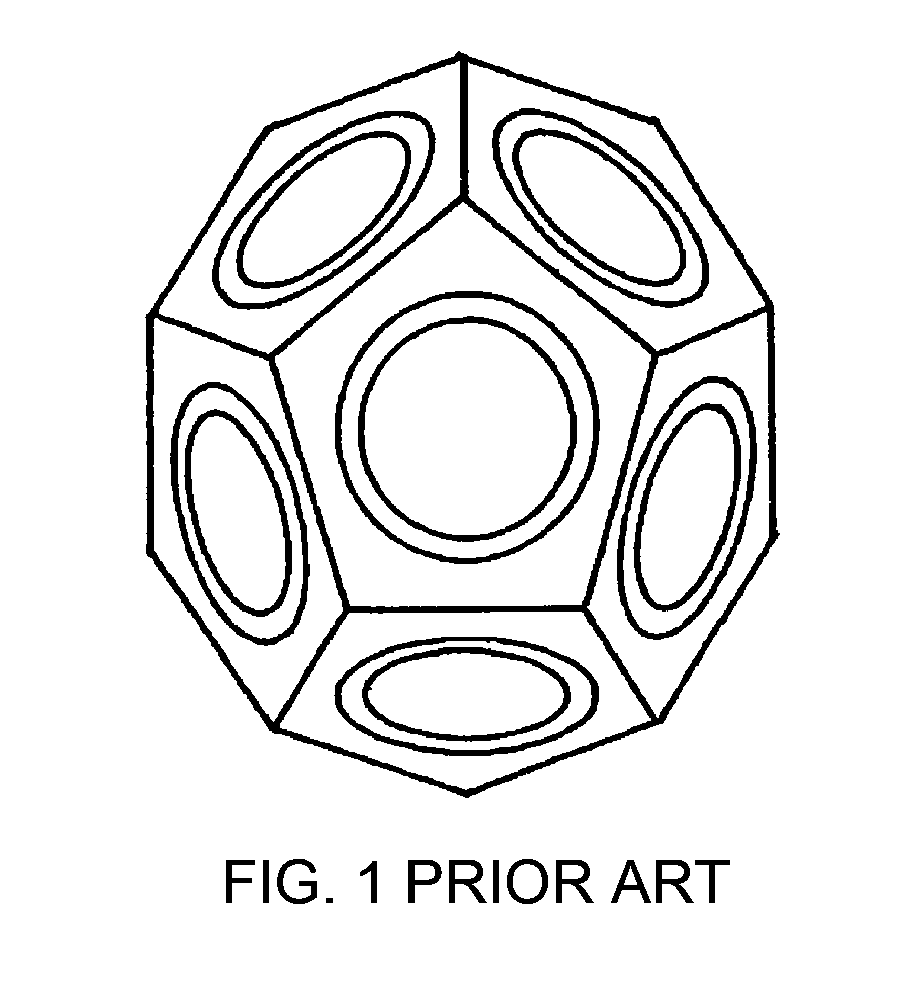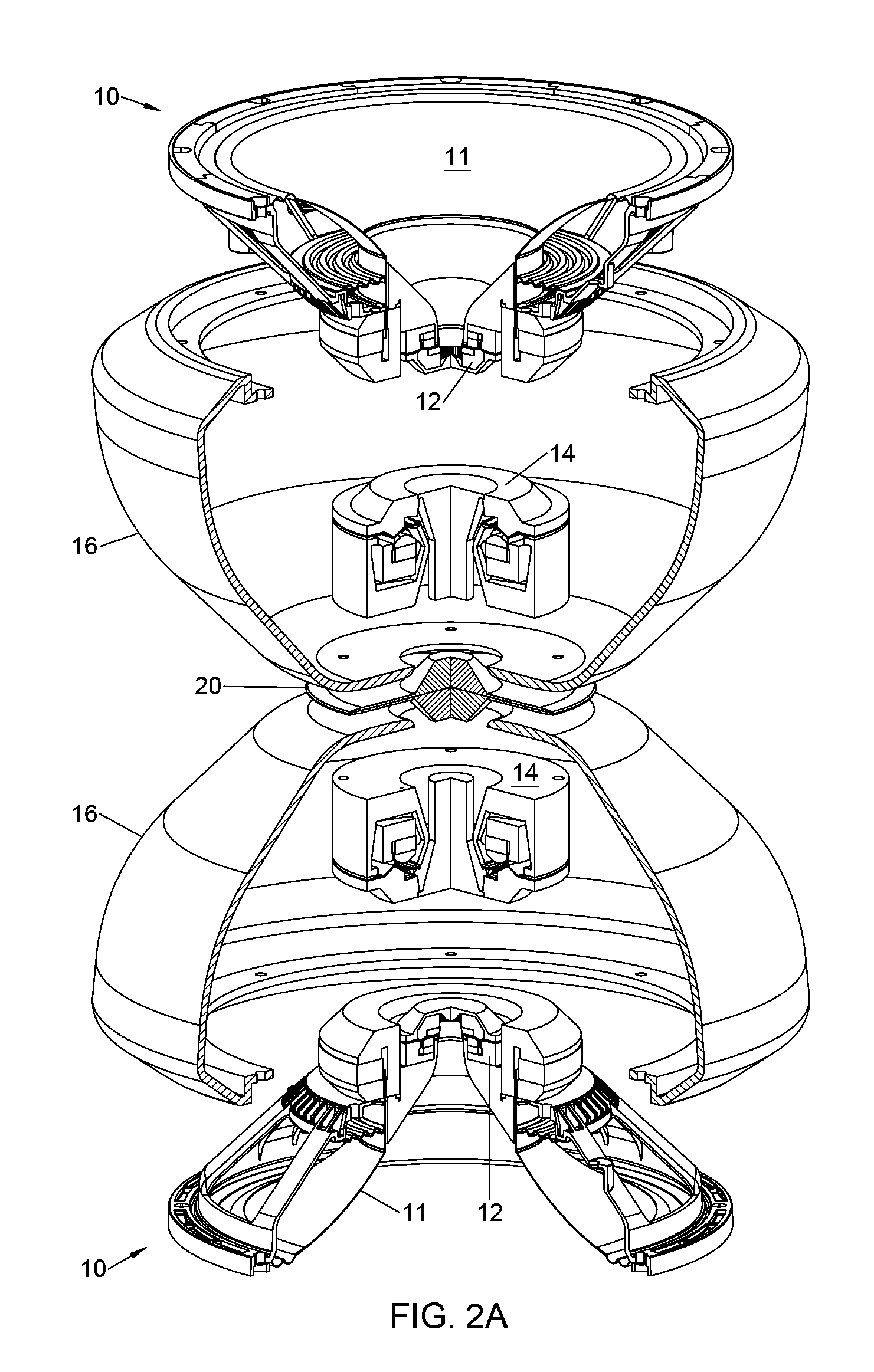Spherical Sound Source for Acoustic Measurements
a sound source and acoustic measurement technology, applied in the direction of transducer casings/cabinets/supports, electrical transducers, frequency/directions obtaining arrangements, etc., can solve the problem of not being able to intuitively find and not being able to achieve the maximum spl deviation
- Summary
- Abstract
- Description
- Claims
- Application Information
AI Technical Summary
Benefits of technology
Problems solved by technology
Method used
Image
Examples
first embodiment
DESCRIPTION OF THE FIRST EMBODIMENT
[0040]The embodiment comprises two low-frequency / high-frequency coaxial loudspeakers 10, two mid-high frequency compression drivers 14, and two enclosures 16. The loudspeakers are fixed correspondingly at the larger and the smaller openings of the enclosures 16, together with which they make up two low frequency closed box arrangements of the embodiment. The enclosure necessary wall thickness depends strongly of its material's mechanical properties, and in case of fiber glass composite 6 mm thickness has proved to be fully adequate.
[0041]Enclosure side walls are generated as a surface of revolution with the curvature of the surface being defined in its initial extension by a hyperexponential formula. This initial part, starting from the output of the mid-high frequency compression driver 14, defines together with a circular plate 20 said hyperexponential horn expansion in radial direction. The middle section, being a substantially straight line seg...
second embodiment
DESCRIPTION OF THE SECOND EMBODIMENT
[0049]The second embodiment, being the half of the first embodiment, is illustrated on FIG. 3A as an acoustic measurement sound source, mounted on floor. FIG. 3B illustrates the same embodiment, used for speech and music reinforcement and sound reproduction, mounted on a ceiling. The embodiment comprises one coaxial loudspeaker 10, mounted on enclosure 16, behind which a mid-high frequency compression driver 14 is fixed on a small opening of the enclosure. Mid-high frequency radially expanding horn is obtained between a substantially circular plate 20 mounted on floor 24 or ceiling 28 and enclosure's outer walls in driver's vicinity. Further, the hard floor or ceiling is used as one of the horn flares. Each spherical sound source half, mounted together with the circular plane half on a hard floor, or on any flat hard surface, is operated individually as spherical sound source in so obtained half spherical space. As in the first embodiment, low fre...
PUM
 Login to View More
Login to View More Abstract
Description
Claims
Application Information
 Login to View More
Login to View More - R&D
- Intellectual Property
- Life Sciences
- Materials
- Tech Scout
- Unparalleled Data Quality
- Higher Quality Content
- 60% Fewer Hallucinations
Browse by: Latest US Patents, China's latest patents, Technical Efficacy Thesaurus, Application Domain, Technology Topic, Popular Technical Reports.
© 2025 PatSnap. All rights reserved.Legal|Privacy policy|Modern Slavery Act Transparency Statement|Sitemap|About US| Contact US: help@patsnap.com



